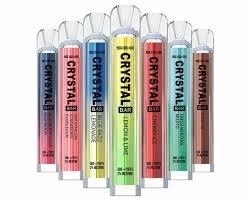Title: The Ultimate Guide to Facial Oil for Dry Skin: Nourishing, Hydrating, and Restoring Your Skin’s Glow
The Ultimate Guide to Facial Oil for Dry Skin: Nourishing, Hydrating, and Restoring Your Skin’s Glow
Dry skin can often feel tight, flaky, and dull, leaving you searching for ways to restore its natural moisture and glow. While moisturizers are essential, many people with dry skin have found that incorporating facial oils into their skincare routine works wonders. If you’ve been curious about how facial oils can benefit your skin, this guide will walk you through the process, explain why facial oils are so effective for dry skin, and help you choose the best products for your needs.
Thank you for reading this post, don't forget to subscribe!What Is Facial Oil?
Facial oil is a skincare product designed to hydrate, nourish, and lock in moisture in the skin. It’s made from a blend of natural plant oils, such as jojoba, argan, rosehip, and marula, among others. These oils are rich in essential fatty acids, vitamins, and antioxidants that help support the skin’s barrier function and provide lasting hydration.
Unlike the traditional creams and lotions, facial oils are typically more concentrated and absorb quickly, making them ideal for giving dry skin the hydration boost it needs.
Why Facial Oil is Perfect for Dry Skin
Dry skin lacks the natural oils it needs to retain moisture and protect itself from environmental stressors. As a result, it can become irritated, rough, and more prone to signs of aging. Facial oils are rich in lipids, which help replenish the skin’s natural oils and create a protective barrier, preventing moisture loss.
Here’s why facial oils are essential for dry skin:
- Deep Hydration: Oils provide intense hydration and help seal in moisture, making them ideal for skin that feels dry or parched.
- Improved Skin Texture: Regular use of facial oils can smooth rough patches and reduce the appearance of flakiness.
- Nourishment: Many oils contain vitamins (like vitamin E) and antioxidants (like vitamin C) that promote healthy skin and improve overall skin tone.
- Restoring Skin Barrier: Facial oils help reinforce the skin’s natural barrier, preventing water loss and protecting against environmental damage.
- Long-lasting Glow: With proper hydration, dry skin will appear plump, glowing, and healthier.
Best Facial Oils for Dry Skin
When choosing a facial oil for dry skin, it’s important to look for oils that are rich in fatty acids, antioxidants, and vitamins. Below are some of the best facial oils you can use to keep your skin nourished and hydrated.
- Argan Oil
Argan oil is known for its moisturizing and anti-aging properties. It’s rich in essential fatty acids and vitamin E, which help restore dry, flaky skin and give it a healthy, radiant glow. Argan oil is gentle enough for sensitive skin but effective in keeping skin hydrated. - Rosehip Oil
Rosehip oil is an excellent source of essential fatty acids and vitamin A, which help repair skin damage and improve skin texture. It also helps reduce inflammation, making it great for those with dry, irritated skin. - Jojoba Oil
Jojoba oil mimics the skin’s natural sebum and helps balance moisture levels. It is rich in vitamins E and B-complex, which promote healing and moisture retention. Jojoba oil is non-comedogenic, meaning it won’t clog pores, making it suitable for most skin types, including those prone to acne. - Marula Oil
Marula oil is packed with antioxidants, essential fatty acids, and amino acids. It is excellent for replenishing moisture in dry skin and improving elasticity. Marula oil also has anti-inflammatory properties, which can help soothe irritated skin. - Squalane Oil
Derived from olives or sugarcane, squalane is lightweight, non-greasy, and incredibly effective in hydrating the skin. It’s great for dry skin because it locks in moisture and prevents water loss, leaving skin feeling soft and smooth. - Baobab Oil
Baobab oil is known for its ability to deeply hydrate and promote skin regeneration. It contains vitamins A, D, E, and F, which help nourish dry skin and prevent further dehydration.
How to Use Facial Oil for Dry Skin
Using facial oil correctly is crucial to getting the best results. Follow these simple steps for an effective facial oil routine:
- Cleanse Your Skin: Start with a gentle cleanser to remove dirt, makeup, and impurities from your face.
- Tone (Optional): If you use a toner, apply it after cleansing to balance your skin’s pH levels and prep it for hydration.
- Apply the Facial Oil: Take a few drops of facial oil and warm it between your palms. Gently press it into your skin, focusing on areas that tend to be the driest (like the cheeks, forehead, and around the mouth).
- Massage: Use circular motions to massage the oil into your face, allowing it to absorb. This helps stimulate blood circulation and improve the absorption of the oil.
- Follow with Moisturizer: While facial oil works wonders on its own, layering it under a moisturizer can help seal in the benefits. This step is optional but may be beneficial for extra hydration.
Tip: You can also mix a few drops of facial oil with your regular moisturizer for a double boost of hydration.
Tips for Choosing the Right Facial Oil for Your Skin
- Check the Ingredients: Look for oils with natural, nourishing ingredients like jojoba, argan, or rosehip. Avoid oils with synthetic additives or fragrances that might irritate dry skin.
- Consider Your Skin Type: Some oils may be better suited to specific skin types. If you have sensitive skin, opt for lightweight, non-comedogenic oils like squalane or marula.
- Patch Test: Always perform a patch test before applying a new oil to your face to ensure you don’t have any adverse reactions.
- Go for Cold-Pressed Oils: Cold-pressed oils retain more nutrients, so choose oils that are cold-pressed or unrefined for maximum benefits.
Frequently Asked Questions (FAQ)
1. Can facial oils make my skin oily? Facial oils are designed to hydrate and balance the skin’s moisture levels, not add excess oil. When used properly, facial oils won’t clog pores or make your skin greasy, especially if you choose oils suited for your skin type.
2. How often should I use facial oil for dry skin? You can use facial oil once or twice a day, depending on how dry your skin is. For optimal hydration, apply it at night and in the morning if your skin feels particularly dry.
3. Can facial oils help with aging skin? Yes! Many facial oils, such as rosehip and argan oil, are packed with antioxidants and essential fatty acids that help reduce the appearance of fine lines and wrinkles. They can improve elasticity and promote a youthful glow.
4. Can I use facial oil under makeup? Absolutely! Choose a lightweight facial oil that absorbs quickly (like squalane or marula oil) to use before makeup. It will provide hydration and create a smooth base for makeup application.
5. How long does it take to see results from using facial oil? Results can vary depending on your skin’s condition and the oil you use. However, with regular use, you should notice a visible improvement in your skin’s hydration and texture within a few days to a week.
Conclusion:
Facial oils are a game-changer for those with dry skin, providing the hydration and nourishment that your skin craves. With the right oil and proper application, you can restore your skin’s natural moisture balance, improve its texture, and achieve a healthy, radiant glow. Don’t be afraid to incorporate facial oils into your skincare routine—your dry skin will thank you!





